HyViD (Synthetic Hyperspectral Array Video Database)
Overview
Hyperspectral imaging aims at sampling the light spectrum for each pixel. To record these hyperspectral data cubes in a high resolution in each dimension, snapshot hyperspectral cameras are necessary. To achieve this, various sensing systems were developed, e.g., camera arrays and color filter arrays. These snapshot hyperspectral cameras always need a reconstruction process to recover high-resolution images since it is impossible to record a 3D data cube with 2D grayscale sensors without exploiting the temporal dimension, which sacrifices snapshot capabilities. Therefore, ground-truth hyperspectral video is necessary to evaluate the performance of these snapshot cameras. For this, a synthetic hyperspectral array video database was developed, which can be processed to simulate diverse hyperspectral snapshot cameras. Hence, each of the seven scenes is rendered from a three times three camera array for 30 frames. The approach to render hyperspectral images is to transform a classical RGB renderer by rendering each wavelength independently as grayscale image. Of course, this database also can be used for many other tasks, where a high resolution for each dimension is necessary, for example, spectral reconstruction, cross-spectral depth estimation, hyperspectral denoising algorithms and hyperspectral video coding.
Database
The synthetic Hyperspectral Video Database (HyViD) provides seven scenes rendered from 400 nm to 700 nm in 10 nm steps, resulting in 31 hyperspectral channels. The videos have a length of 30 frames. Furthermore, the scenes are rendered using a camera array using nine cameras arranged in a three times three grid. Depth maps for every camera and frame are provided as well. The camera array is arranged as follows:
[View from front onto the sensor]
0 - 1 - 2
| | |
3 - 4 - 5
| | |
6 - 7 - 8
Thus, camera 4 is the center camera.
The folder structure is:
camera -> channel -> frame
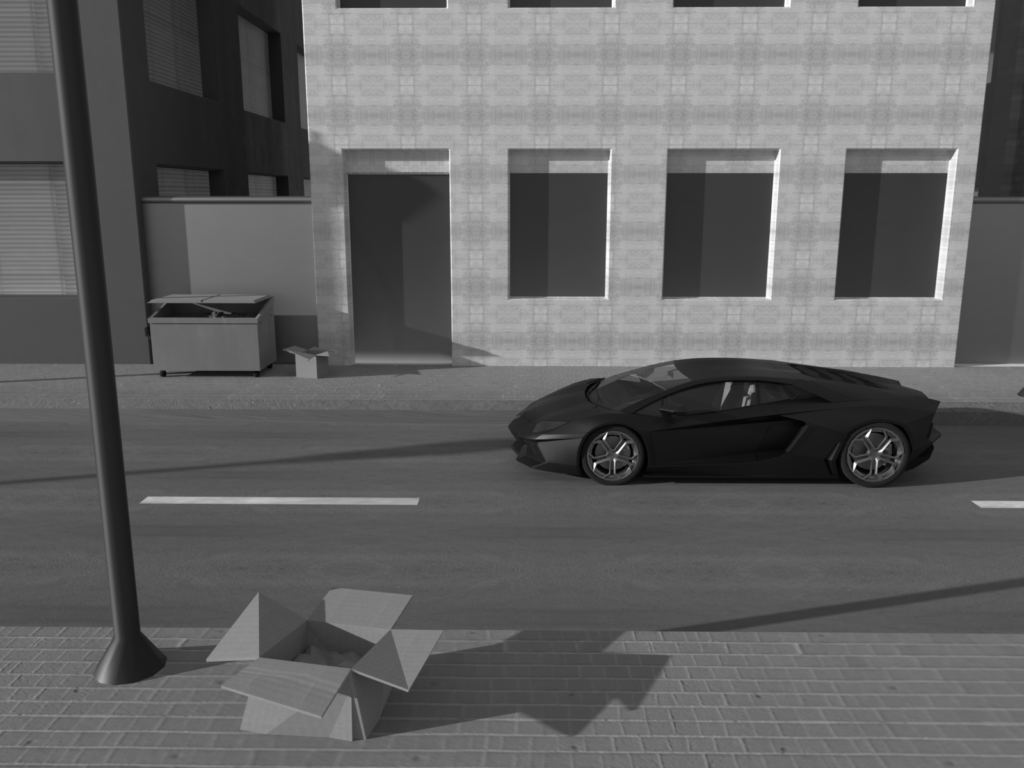 |
 |
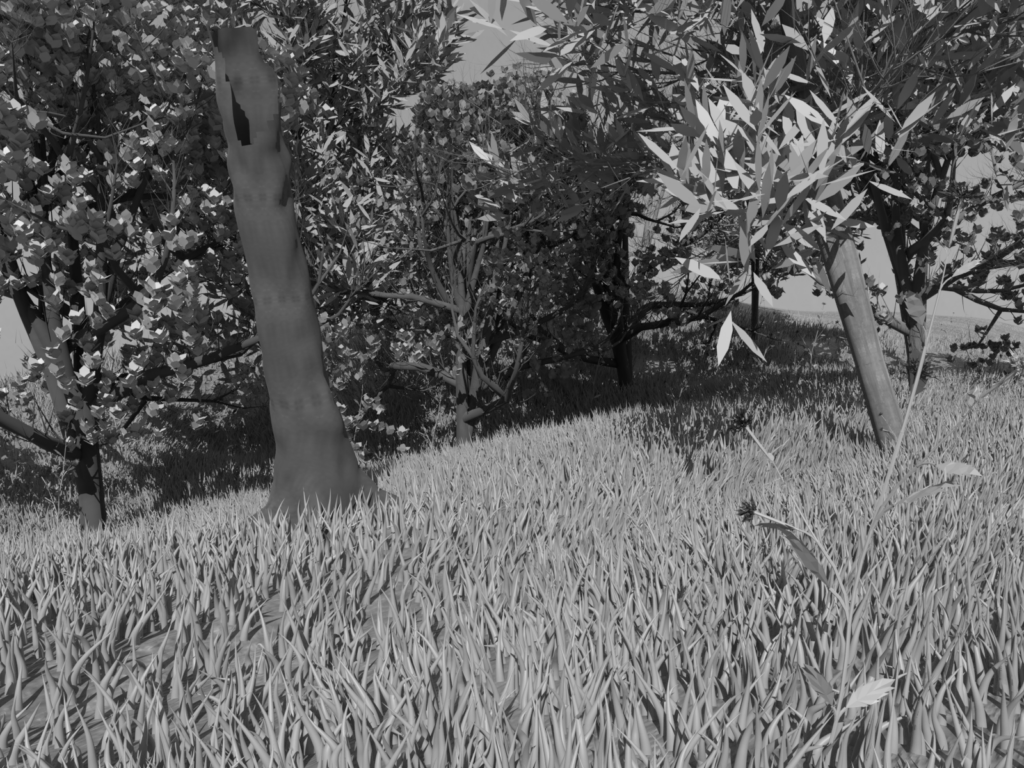 |
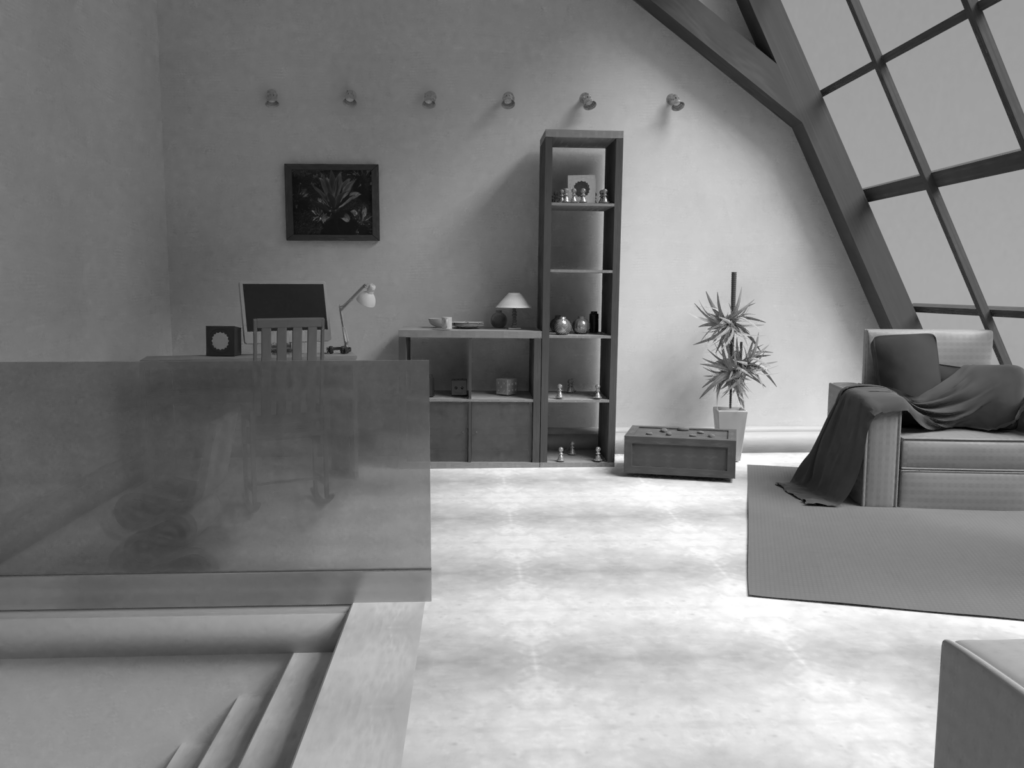 |
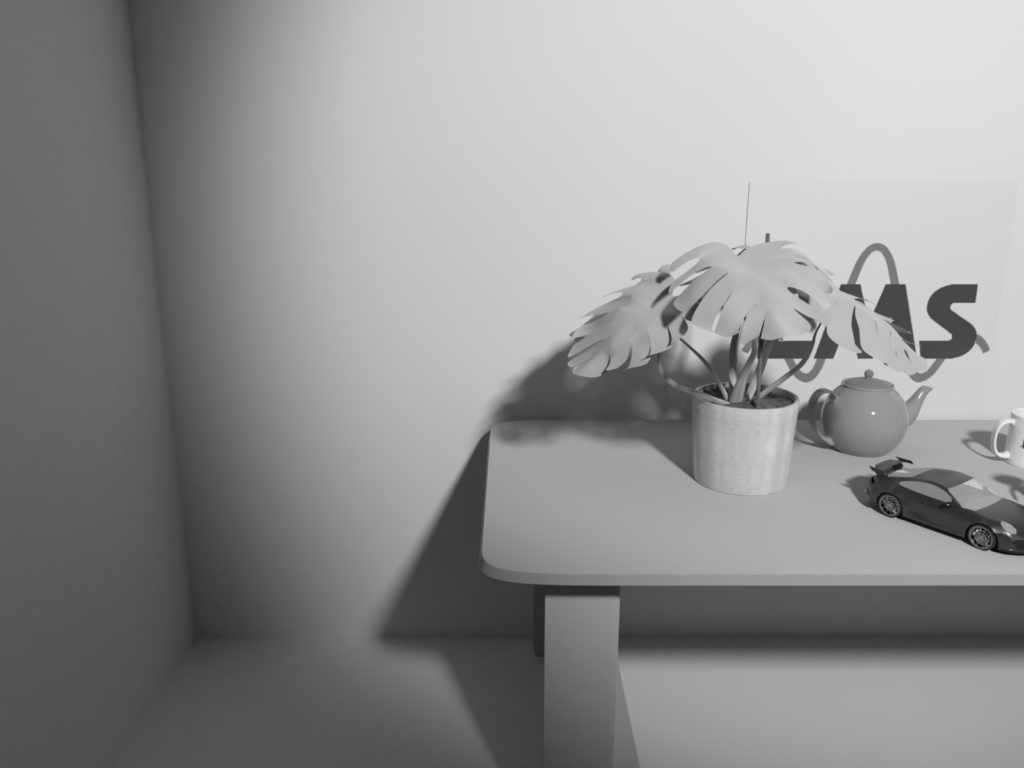 |
 |
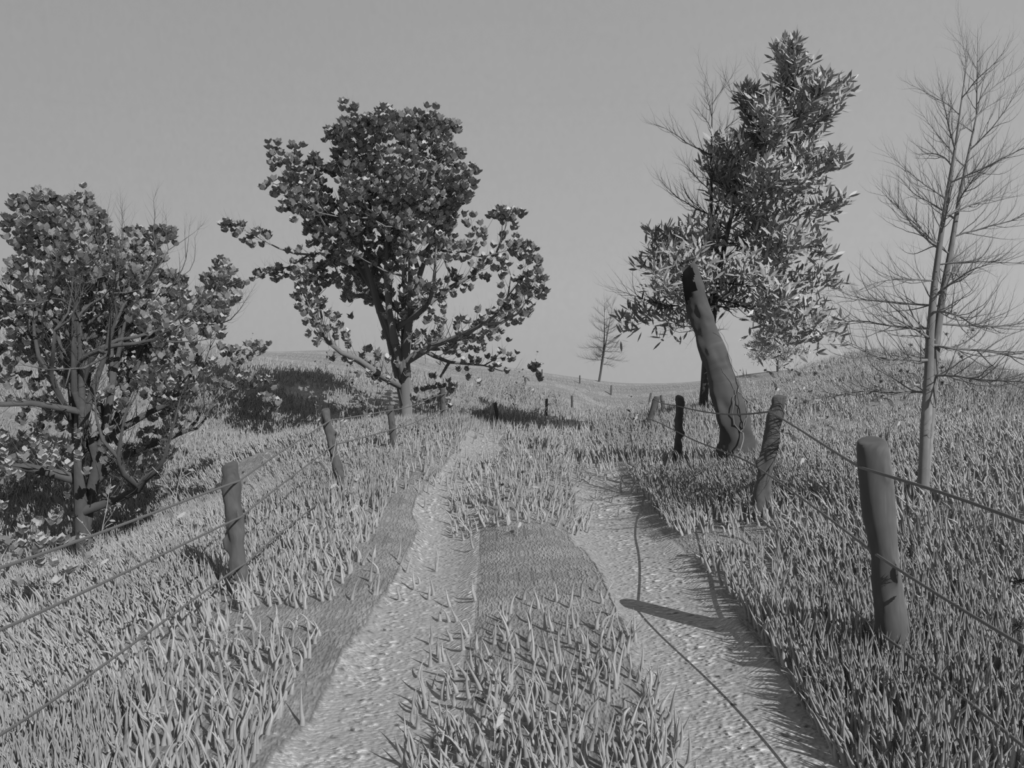 |
| City | Family House | Forest | Indoor | Lab | Medieval Seaport | Outdoor |
Source Code
Rendering Framework
If you execute main.py using Python3 everything should work as long as Blender is installed and executable in command line by blender. You can also execute „run.py“ within Blender if you want to model a new scene and execute it. If you add textures to objects, the name of an „Image Texture“ must be the same as the name of the folder. If you want to move the camera, please move the „cam_center“. This camera is used to calculate the positions of the other cameras. If you name a light source „sun“, then the spectrum of the sun is applied. Otherwise, if the name of a light source ends with ‚K‘, then the number in front of it determines the light spectrum according to the black body radiation, e.g., a light source with name 3200K will lead to a light spectrum of a black body at 3200K temperature.
Publication
If you use the dataset or source code for your research, you should cite the following paper:
Frank Sippel, Jürgen Seiler, André Kaup
Synthetic hyperspectral array video database with applications to cross-spectral reconstruction and hyperspectral video coding
Journal of the Optical Society of America A-Optics Image Science and Vision, vol. 40, num. 3, Mar 2023, pp. 479-491
DOI: 10.1364/JOSAA.479552
arxiv: https://arxiv.org/abs/2301.07551
Original 3D Models
City: Scene: https://www.blendswap.com/blend/25505 Car: https://www.blendswap.com/blend/16710
Family House: House: https://www.blendswap.com/blend/23878 Trees & Bush: https://www.blendswap.com/blend/14644 Car: https://blendswap.com/blend/13575
Forest: Scene: https://www.blendswap.com/blend/5957 Trees & Bush: https://www.blendswap.com/blend/14644
Indoor: Scene: https://www.blendswap.com/blend/6468
Lab: Small man: https://blendswap.com/blend/14431 Cups: https://blendswap.com/blend/4499 Figure: https://blendswap.com/blend/4499 Cardboard: https://blendswap.com/blend/19402 Porsche: https://blendswap.com/blend/11182 White lily: https://blendswap.com/blend/12953 Monstera: https://blendswap.com/blend/27517 Table: https://www.blendswap.com/blend/17037
Medieval Seaport: Scene: https://blendswap.com/blend/6115
Outdoor: Scene: https://www.blendswap.com/blend/5957
License
The database and source are licensed using CC-BY-SA.
